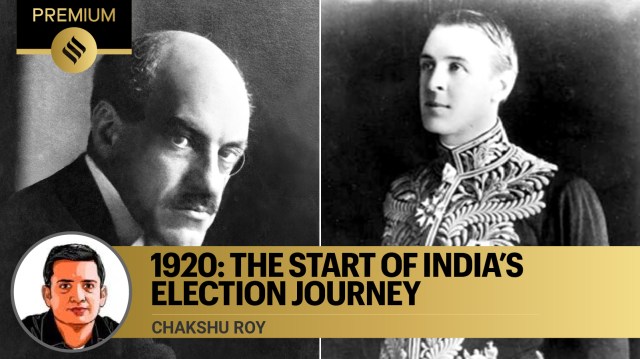
In 1920, Delhi resident Abdul Majid came to the attention of the British government. He was someone who would ordinarily not be on the administration’s radar. His description varied from petty trader to sweetmeat seller and confectioner. In November that year, he filed nomination papers to contest an election. Opposing him were a couple of lawyers and a bangle seller. The government dismissed Majid and the bangle seller as “ridiculous candidates”.
Come election day, Majid trumped his rivals, securing 288 votes. The lawyer, who came second, got 26 votes. In official records, a British officer described the contest as “…contrary to expectations impudent buffoonery carries the day”. With this win, Majid joined a select group of Indians elected to the highest law-making body in the country.
The 1920 elections were the starting point for direct elections in India. Until then, the colonial policy was to select a few educated Indians for the legislature and use them to understand the needs of the masses. However, it became difficult to ignore public sentiment on more Indian representation in legislatures. Our colonial administrators responded in 1909 by increasing Indian members through limited elections. A controversial measure was a separate electorate for Muslims.
The report on Indian Constitutional Reforms 1918 (popularly called the Montagu-Chelmsford Reforms) highlighted the shortcomings of the 1909 election process. The report noted, “At present electorates of a general character hardly exist. Almost all are designed to represent special classes or interests and consist of very few persons. Those which represent Muhammadans were intended to be fairly inclusive but even those are limited to a few hundred electors.”
The Montagu-Chelmsford report recommended setting up a national legislature with two Houses. One of the Houses in this law-making body would have members directly elected by the people. The report also suggested setting up legislatures at the state level with elected members. The British Parliament accepted these recommendations and passed the Government of India Act, 1919. Until then, there was no need for a full-scale electoral law. However, with these recommendations coming into effect, lawmakers had to be elected by the people. The government needed an electoral framework to hold the first large-scale elections in our country.
The 1919 law and the rules made under it provided the nuts and bolts of the election process. Together, they specified the qualifications for voting and contesting elections, and the mechanism for preparing the electoral roll. Eligible voters and candidates had to be British subjects. The age for voting was 21. For contesting elections, it was 25. Women could neither vote nor contest elections unless the legislature in the state removed the sex disqualification (which they did). The law also provided for different constituencies, such as Muhammadan and non-Muhammadan (rural and urban for both), Sikh, European, Landholders and Chambers of Commerce. Voters and candidates also had to meet domicile, income, and property holding criteria to participate in the elections.
The bewildering array of qualifications for election participation meant that the administrative workload was reduced and resulted in a minimal franchise size. For example, in the election for the national legislative assembly, that Majid contested from the Delhi constituency, there were a total of 3,300 voters.
After the Montagu-Chelmsford reforms became operational, the British government scheduled the first direct elections towards the end of 1920. In August that year, Mahatma Gandhi launched the non-cooperation movement. A part of that movement was to not participate in the election process. Prospective candidates were discouraged from contesting. In some cases, individuals whose success at the ballot had the potential to ridicule the reform process and embarrass the British government were also put up.
In Lahore, the election process turned violent. A government officer reported, “It seems to me that these incidents are the direct results of violent speeches made by advocates of non-cooperation during the last month or two. Owing to this series of speeches the British Government of India is now hated by the ordinary citizens of Lahore. The gift of responsible government which is being made to India is now despised.”
The 1919 law and the elections a year later led to more Indians in the legislature, but the right to vote was the domain of very few Indians. However, there were learnings that independent India’s Parliament would build over. For example, the colonial government in 1920 passed a law criminalising threats, bribery and inducement during an election. It penalised these corrupt practices with both jail time and a fine. They were added to the Indian Penal Code and continue to be a part of it. Since Independence, our Parliament has worked towards strengthening legal provisions to keep elections free and fair. However, the most significant step has been ensuring that everyone over 18 is enrolled to vote. Now, roughly a billion Indians will be on the electoral rolls in the upcoming general elections.
Edwin Montagu, the catalyst for the 1920 elections, noted, “The honest education of the electorate is a matter of primary importance. May one who takes an anxious interest in India’s future echo the appeal that there should be no appeal to racial or religious prejudices and express the hope that, in the turmoil of an election, the great charm of Indian courtesy may not disappear?” His words are as important today as they were a hundred years ago.
The writer looks at issues through a legislative lens and works at PRS Legislative Research